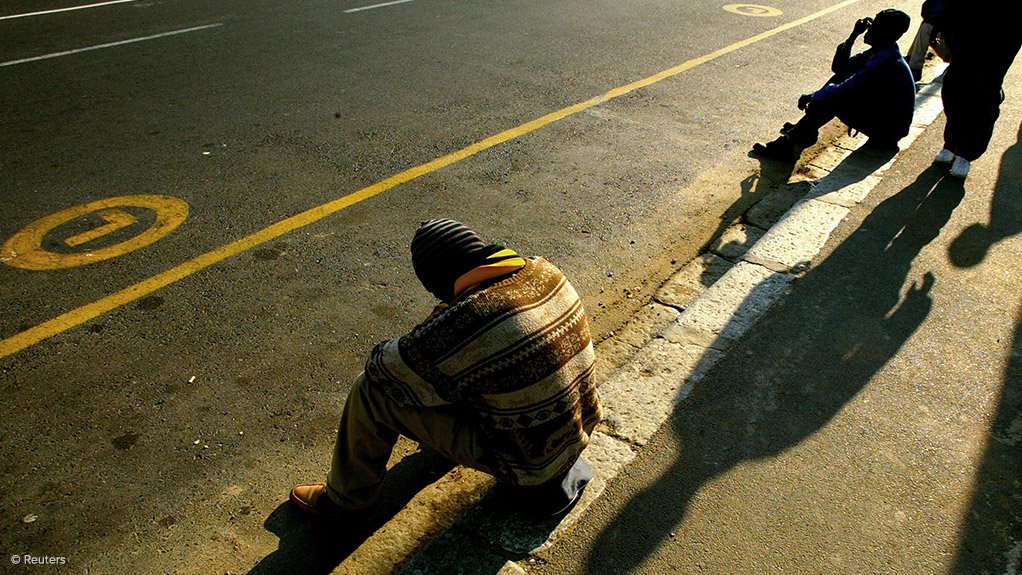South Africa’s unemployment rate rose by 0.3 of a percentage point, or 87 000 persons, quarter-on-quarter to 25.5% during the three months ended June to reach its highest level since 2008, Statistics South Africa (Stats SA) revealed on Tuesday in its Quarterly Labour Force Survey (QLFS).
Stats SA noted that, quarter-on-quarter, employment increased by 39 000 people, largely owing to increases of 60 000 and 43 000 jobs in private households and the informal sector respectively, which were partially offset by declines in employment in the agricultural and formal sectors, which lost 39 000 and 24 000 jobs respectively.
This modest increase in the number of employed people was counteracted by a large increase in the size of the labour force, of 126 000 people, ultimately resulting in a higher unemployment rate, Nedbank’s economic unit explained.
“The unemployment rate is likely to remain high in the short term given weak domestic demand, rising input costs, frequent labour disputes, significant infrastructure constraints and regulatory issues in some of the key sectors,” the bank added.
Year-on-year, employment increased by 403 000 people during the second quarter, largely owing to an increase of 381 000 jobs in the formal sector. The number of unemployed people, however, increased by 182 000 over the period, leading to slight year-on-year increases in the unemployment and absorption rates of 0.2% and 0.4% respectively.
Quarter-on-quarter, the manufacturing sector lost 60 000 jobs, while the construction sector shed 18 000 and 5 000 jobs were lost in the mining sector.
Releasing the QLFS, Stats SA statistician-general Pali Lehohla pointed out that the absorption rate remained virtually unchanged during the second quarter, only decreasing by 0.1% to 42.7%.
He noted that while the absorption rate had improved from its third-quarter 2010 level of 41.3%, it was not yet back at prerecession levels of 46.2%.
Stats SA noted that during the second quarter the unemployment rate was the highest among women, the youth, black Africans and those with an education level below a matric certificate.
During the quarter under review, the unemployment rate among women was 27.5%, 3.7% higher than that among men, while the labour force participation rate was 13 percentage points lower among women than among men.
Lehohla further noted that a comparison between youth – those aged 15 to 34 years – showed that the youth unemployment rate, at 36.1%, was almost 20% higher than that among adults aged 35 years and above.
Currently, 3.5-million young people were unemployed, which was well above the prerecession figure of three-million.
The absorption rate and labour-force participation rate were also more than 20% higher among adults than among the youth.
He further noted that, among persons aged 15 to 24 years, the unemployment rate during the second quarter of the year, of 51.8%, was significantly higher than that of the fourth quarter of 2008, before the recession, of 44.9%. This meant that while all the other age groups increased their share in employment over the period, this portion of the youth’s share shrank.
EMAIL THIS ARTICLE SAVE THIS ARTICLE
To subscribe email subscriptions@creamermedia.co.za or click here
To advertise email advertising@creamermedia.co.za or click here











